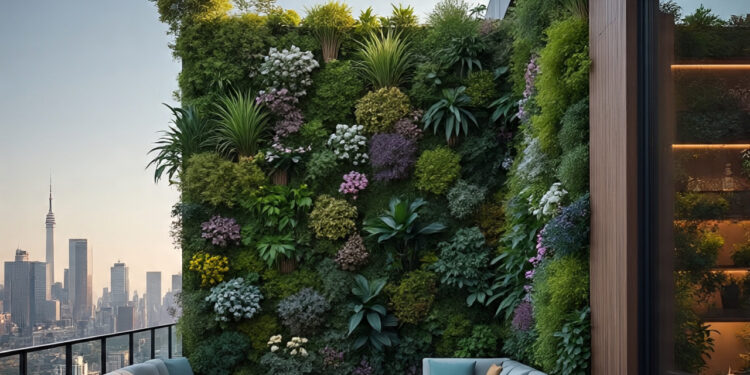Vertical gardens have emerged as a great alternative whereby the homeowner does not require a lot of ground. They present a designing effective method of introducing vegetation into small gardens, terraces, and balconies, enhancing the outdoor spaces being more lush and comfortable. With the help of walls, fences and other vertical support, home owners can now have plants growing where in the past only large gardens could offer.
Vertical gardens are not only a matter of design choice either. They improve air quality, can offer natural insulation and can even lower the noise levels in cities. As long as proper planning goes into it, a vertical garden can be included in nearly any outdoor space, turning even the tiniest of yards into a verdant and practical place.
Planning the Vertical Garden Layout
When one is constructing a vertical garden in a small outdoor area, planning is very critical. Begin by evaluating the workable walls or fences; to be used and determining where good sunlight is readily available. Think of the kind of plants that will work in such an environment, as well as, in consideration of seasonal change and maintenance. Using a modular panel or hanging planter as the right structure can also aid in maximising the use of the vertical space.
Considerations should be made in respect to access and watering. You can install an irrigation system or have a set of planters where you can easily take off, water them and escape; with that you can make your garden stay healthy and manageable. Another strategic implementation that provides a feeling of a greater depth and dimension is positioning the plants.
Selecting Appropriate Plants
Selecting proper plants is a major factor in the successful development of a vertical garden. The climbing vine plants, small flowering plants, ferns, etc. should be used. Plants that require minimal watering should be preferred when used to cover walls and other vertical surfaces because watering less frequently will not affect the appearance of the plant too much.
Consider mixing textures and colors to add visual interest. It might be even aesthetically and functionally creative by entwining trailing flowers or succulent with leafy greens to invoke a layered impact. Remember how the plants grow so as not to crowd them out and to provide enough room to each species in order to grow.
Installing the Vertical Garden Structure
Proper installation of the vertical garden scaffolding is key to success in the long-run. Attach panels, shelves or hanging planters to solid surfaces, ensuring that they are strong enough to hold soil, the plants themselves, and water. Working with good quality materials is an advantage that will eliminate damage during the lifetime of the roof and will save on repairs. In the case of covered outdoor spaces, pergola louvers can be incorporated in the design such that you can have adjustable sunlight light in the space as well shutting out any harsh weather conditions against plants that are not hardy.
Make sure the construction is done in a way so that there is proper drainage to avoid water pooling, which may cause damage to the plants and the walls holding them. Use of plant drainage trays can be of great help, also elevating plant standings can help in maintaining intact soil conditions. Scheduling of routine maintenance and sometimes changing plants will also help in making sure the garden has a long life and it is a beautiful one.
Maintaining the Vertical Garden
Vertical gardens require constant maintenance which is however worth it. Watering, pruning, and fertilizing plants on a regular basis will keep them well nurtured and promote growth. Looking out for pests and diseases early eliminates the spread of a problem to damage the garden. The establishment of a maintenance schedule to fit the type of plants is easier to follow.
Vertical gardens also benefit from seasonal adjustments. Cleaning up old foliage, dividing plants that have gotten too large, and changing some of the plant groupings in terms of color and texture would help keep the garden fresh-looking throughout the year. By maintaining their vertical gardens, this space can be easily enjoyed as it adds beauty and functionality to the property as well as using the limited outdoor space to its full advantage.







